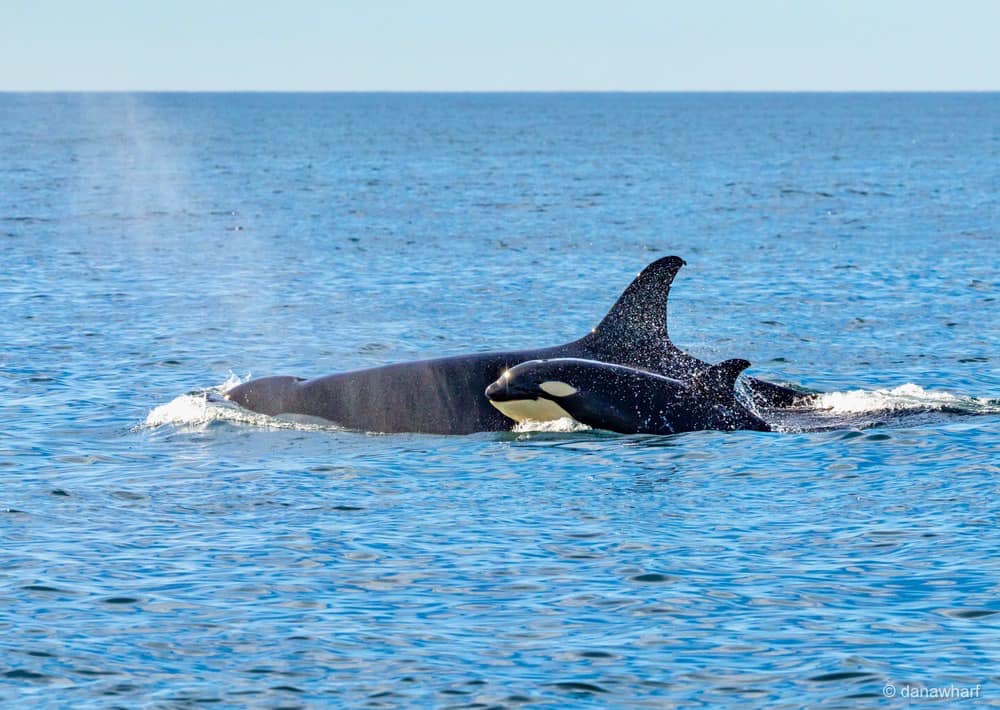Everything You Need To Know About Orcas

Orcas, also known as killer whales, are one of the most iconic and fascinating creatures in the ocean. These majestic creatures are known for their intelligence, social behavior, and unique appearance. In this article, we will dive into everything you need to know about orcas, from their habitat and behavior to the best places to see them in the wild.
Habitat and Behavior of Orcas
Orcas are found in all of the world’s oceans, from the Arctic to the Antarctic. They are highly adaptable and can thrive in both warm and cold waters. However, they are most commonly found in colder regions, such as the North Pacific and North Atlantic oceans.
Social Behavior
Orcas are highly social animals and live in groups called pods. These pods can range in size from a few individuals to over 40 members. Within a pod, there is a strong social hierarchy, with the oldest and largest female, known as the matriarch, leading the group.
Orcas are also known for their strong family bonds. They have a complex communication system and use a variety of vocalizations to communicate with each other. They also have unique hunting techniques that are passed down from generation to generation within a pod.
Diet
Contrary to their name, orcas are not actually whales, but the largest species of dolphin. They are apex predators and have a diverse diet, which includes fish, seals, sea lions, and even other whales. They are known for their cooperative hunting techniques, where they work together as a team to catch their prey.
Best Places to See Orcas in the Wild
If you want to see orcas in their natural habitat, there are a few places around the world where you have a higher chance of spotting them. Here are some of the best places to see orcas in the wild.
Orcas in California
California is one of the best places to see orcas in the United States. The most popular spot to see them is in Dana Point, a small coastal city in Orange County. Dana Point is home to Dana Wharf Whale Watching, a company that offers daily whale watching tours. These tours take you out to sea, where you can see orcas, humpback whales, and other marine life in their natural habitat.
Orcas in Orcas Island
Orcas Island, located in the San Juan Islands of Washington state, is named after the orcas that are commonly seen in the area. This island is a popular tourist destination, known for its beautiful scenery and outdoor activities. Camping on Orcas Island is a popular option for those looking to get up close and personal with nature and potentially spot some orcas in the surrounding waters.
Orcas in British Columbia
British Columbia, Canada, is another great place to see orcas in the wild. The Johnstone Strait, located between Vancouver Island and mainland British Columbia, is known as the best place in the world to see orcas in their natural habitat. This area is home to a large population of orcas, and there are many tour companies that offer whale watching trips in the area.
Interesting Facts About Orcas
- Orcas are the largest species of dolphin, with males reaching lengths of up to 32 feet and weighing up to 12,000 pounds.
- They are highly intelligent and have the second-largest brain of all marine mammals, second only to sperm whales.
- Orcas are known for their distinctive black and white coloring, with a white patch above their eyes and a white underside.
- They have a lifespan of up to 50-80 years in the wild.
- Orcas are apex predators, meaning they have no natural predators in the wild.
- They are known for their acrobatic behavior, such as breaching (jumping out of the water) and spyhopping (poking their heads out of the water to look around).
- Orcas are found in all of the world’s oceans, but they are most commonly found in colder regions.
Do Orcas Eat Polar Bears?
One of the most common questions about orcas is whether they eat polar bears. The short answer is no, they do not. Orcas and polar bears live in different regions and have different diets. Orcas are found in the ocean, while polar bears live on land and hunt for seals and other marine mammals.
However, there have been a few documented cases of orcas attacking and killing polar bears. These instances are rare and are most likely due to the polar bear being in the wrong place at the wrong time. Orcas are opportunistic hunters and will take advantage of any prey that is available to them.
Conservation of Orcas
Orcas are considered a vulnerable species, with some populations facing threats such as pollution, overfishing, and habitat loss. In some areas, orcas are also affected by noise pollution from ships and boats, which can disrupt their communication and hunting abilities.
To help protect orcas, it is important to support conservation efforts and responsible tourism practices. When going on whale watching tours, make sure to choose a company that follows guidelines to minimize disturbance to the animals and their habitat.
Orcas are truly remarkable creatures, with their intelligence, social behavior, and unique appearance. They are found in all of the world’s oceans and can be seen in various locations, such as California, Orcas Island, and British Columbia. By learning more about orcas and supporting conservation efforts, we can help ensure that these magnificent animals continue to thrive in the wild for generations to come.
